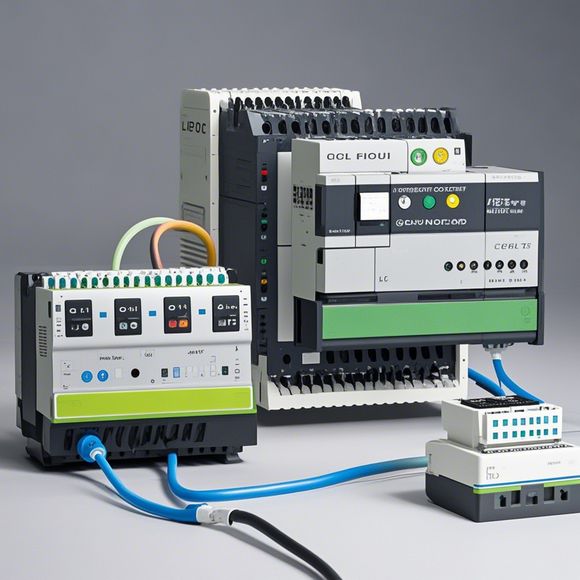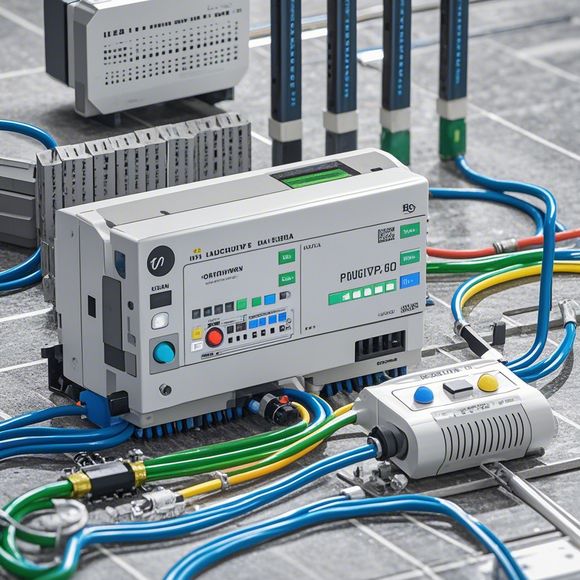Introduction to Programmable Logic Controllers (PLCs)
Programmable Logic Controllers, or PLCs, are a type of industrial control system that can be programmed to perform specific tasks. These controllers are designed to automate a variety of industrial processes, including manufacturing and assembly lines.PLCs are typically used in environments where precise control over a wide range of variables is required, such as in the chemical or food industries. They are particularly useful for processes with complex feedback loops that need to be closely monitored and controlled.One of the key features of PLCs is their ability to be programmed to respond to changes in inputs, such as temperature, pressure, or flow rate. This makes them ideal for systems that require real-time monitoring and adjustments to maintain optimal performance.Another important aspect of PLCs is their ability to communicate with other systems within an industrial automation network. This allows for seamless integration between different pieces of equipment and ensures consistent operation across the entire facility.Overall, PLCs have become increasingly popular in recent years due to their ability to provide highly accurate and reliable control over complex industrial processes. With their wide range of applications and advanced features, they continue to play a vital role in modern industrial operations.
In the world of manufacturing and industrial automation, programmable logic controllers (PLCs) play a crucial role in ensuring smooth and efficient operation of production systems. These devices are designed to control complex machinery and processes by executing instructions programmed into their memory. Understanding the working principles of PLCs is essential for any business that relies on them to maintain high standards of quality and productivity. In this article, we'll delve into the basics of how these versatile controllers function and how they can be integrated into various industrial applications.
At its core, a PLC operates on a set of predefined rules or "programs" stored in its memory. These programs are created by the user, often through a combination of hardware input devices, software development tools, and programming languages such as Ladder Diagrams, Function Block Diagrams, and Structured Text Programming. The PLC reads in the input signals it receives through its sensors or other input devices, compares them to the values defined in its programs, and performs actions based on the comparison results. This process is repeated indefinitely until an interruption occurs, such as when a fault has been detected or when a new set of inputs have been received.
One of the key features of PLCs is their ability to handle a wide range of inputs and outputs. These devices can communicate with other systems using standardized protocols such as PROFIBUS, DeviceNet, or Ethernet, allowing them to be integrated into complex industrial networks. Additionally, PLCs can interface with a variety of sensors and actuators, including temperature sensors, pressure gauges, motor speed controllers, and more. This flexibility enables PLCs to operate in a wide range of environments, including harsh environments where other types of control systems would not be suitable.

Another important aspect of PLCs is their ability to learn and adapt over time. Many modern PLCs come equipped with built-in learning capabilities that allow them to analyze patterns in their input data and adjust their behavior accordingly. For example, if a particular machine consistently runs at a certain speed during a given period of time, the PLC may automatically adjust the speed setting to optimize performance without requiring manual intervention. This capability significantly reduces the need for human oversight and ensures that the system remains responsive and reliable.
In addition to their technical advantages, PLCs also offer several benefits in terms of cost-effectiveness. Unlike traditional control systems that require dedicated hardware and software configuration, PLCs can be quickly installed and configured to suit specific needs. This ease of integration means that businesses can save money by avoiding the upfront costs associated with custom hardware design or extensive customization. Furthermore, since PLCs are designed to operate efficiently and reliably, they can reduce downtime and maintenance costs, leading to overall savings for both the manufacturer and consumer.
Despite their many benefits, there are some limitations to consider when using PLCs in industrial applications. One common issue is the lack of direct communication between different PLC systems. This can lead to challenges in managing complex systems with multiple controllers, each with its own set of rules and inputs. Additionally, PLCs may be susceptible to errors due to hardware failure or software glitches, which can cause unexpected behavior or even safety hazards. To mitigate these risks, it's important for users to carefully evaluate their requirements before selecting a PLC system, and to ensure that all components are properly tested and maintained.

Another consideration when using PLCs is the need for specialized skills and expertise. While PLC programming can be accomplished using simple text-based languages like ladder diagrams or function blocks, more complex systems may require more advanced programming techniques. This can be especially true for larger or more intricate projects that involve multiple sensors, actuators, or other complex systems. As such, it's often beneficial to engage the services of experienced engineers or technicians who specialize in PLC programming and integration.
Finally, one of the most significant advantages of PLCs lies in their ability to automate complex industrial processes and improve operational efficiency. By providing precise control and monitoring capabilities, PLCs can help businesses achieve higher levels of productivity and quality control. They can also simplify the maintenance process by reducing the need for human intervention in routine tasks, freeing up resources for more critical activities. Additionally, PLCs can help minimize waste by optimizing production schedules and reducing downtime caused by unforeseen problems.
In conclusion, while there are certainly challenges associated with using PLCs in industrial settings, their numerous benefits make them a valuable tool for modern manufacturing operations. From their powerful programming capabilities to their flexible architecture and cost-effectiveness, PLCs offer a comprehensive solution for managing complex industrial processes and achieving maximum efficiency. Whether you're designing a new system or upgrading an existing one, understanding the principles behind PLCs can help you take full advantage of their potential and drive your business towards success.

Content expansion reading:
Articles related to the knowledge points of this article:
PLC Controller for Manufacturing Automation
The cost of a PLC Controller: A Comprehensive Analysis
PLC Programming for Automation Control in the Manufacturing Industry